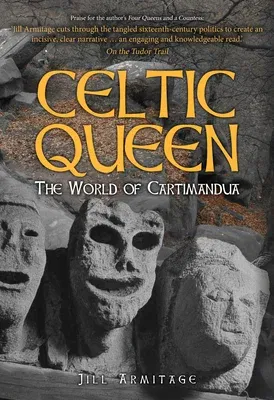Queens Cartimandua and Boudica were both Celtic noblewomen, recorded by
classical writers as part of a tradition of women who showed particular
courage, ambition and political skill, and who were just as formidable
in war as their husbands. They took on the status of Celtic goddesses
and were central players in the struggle against the Roman annexation of
Britain. Boudica led the rebellion against the Romans but her reputation
may be largely symbolic. Using historical and archaeological evidence,
Celtic Queen uncovers the arguably more impressive story of Queen
Cartimandua, the independent ruler of the powerful Brigante tribe whose
territory was the single largest Celtic kingdom in Britain.
Cartimandua's leadership in battle and political influence were probably
much greater than Boudica's. Unlike Boudica, wife of King Prasutagus of
the Iceni tribe, Cartimandua was the regent of the Brigante tribe in her
own right. Her tribe prospered in the new Imperial world because she
cooperated with the invaders and she held her position as queen until
AD69. Cartimandua's territory was considerable, covering most of modern
Cheshire, South and North Yorkshire, Lancashire, North Humberside,
Cumbria, County Durham and Tyne and Wear. But she was seen as a
shameless adulteress after an open affair with her husband's armour
bearer. Such sexual liberation was normal for powerful Celtic women but
it scandalised Roman society. With many references to popular Celtic
culture, their gods, beliefs, art and symbolism, as well as living
conditions and the hillforts that would have been Cartimandua's
headquarters, Celtic Queen offers an insight into the life of this
fascinating woman and the Romano/Celtic world in which she lived.

